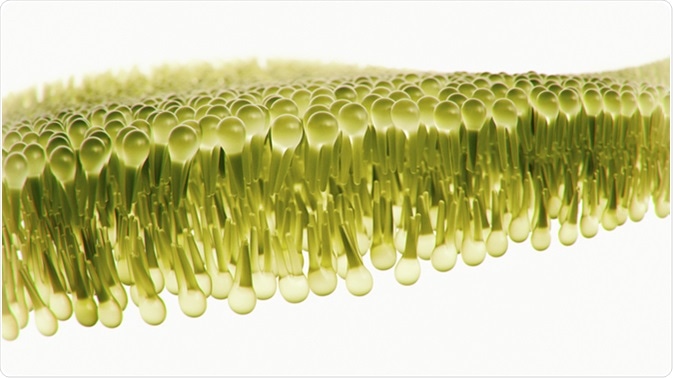 |
| Protocell |
Protocell has been used to refer to the primitive cells or to the
first cells. Protocell refer to specifically to a cell-like structure
along with only two molecular components that are spatially delimited
by a growing fatty acid membrane boundary and a RNA replicase which
contain replicating genetic information. A protocell or protobiont is
a self-organized, endogenously ordered, spherical collection of
lipids proposed as a stepping stone towards the origin of life.
 |
| Different Structures of Lipids |
A lipid is a biomolecule of hydrocarbons that soluble in non-polar
solvent which means, lipids do not or partially dissolved in water
because of its nature of having a hydrophilic head along with a
hydrophobic tail. Fatty acids, waxes, fat- soluble vitamins like
vitamin A, D, E, and K and glyceride are some examples of lipids.
Lipids are broadly of two types; hydrophobic and amphiphilic lipids,
in that, the amphiphilic nature of lipids allows them to form
structures like as Vesicles.
 |
| Bilayered Lipids |
 |
| Structure of Vesicle |
In all biology, a vesicle is a structure within or outside a cell,
consisting of liquid or cytoplasm enclosed by a lipid bilayer.
Self-assembled vesicles are essential components of protocells or
primitive cells. Vesicles are the basic tool used by the cell for
organizing cellular substances. There is a membrane which enclosing
the vesicle is known as plasma membrane. Vesicles form naturally
during the processes of secretion, uptake of food and transportation
of materials within the plasma membrane. Vesicles are also involved
in metabolism, buoyancy control, temporary storage of food and
enzymes and can also act as chemical reaction chambers. Vacuoles,
Lysosomes, Transport Vesicles, Secretory Vesicles, Gas Vesicles,
Extracellular Vesicles are some types of vesicles.
 |
| Transportation of Materials by Vesicles |
Such properties of naturally formed vesicles led to an idea of
cooperative interactions between the membrane and its encapsulated
contents could greatly simplify the transition from simple
replicating molecules to true cells. Such micro-encapsulation would
allow for metabolism within the membrane, the exchange of small
molecules but the prevention of passage of large molecules across it.
The main advantages of encapsulation include the increased solubility
of the contained cargo within the capsule and the storage of energy
in the form of an electrochemical gradient which encourages the
electric sparks of life from the chemical reactions of non-living
matters.
 |
| Dr. Krishna Bahadur |
 |
| The electron scanning of 'Jeewanu' |
In 1963, an Indian chemist Krishna Bahadur and his team was first
synthesized the synthetic chemical particles that posses coacervates,
microscopic spherical cell-like structures by using photochemical
reactions from a mixture of simple minerals and basic organic
compounds while exposed to sunlight. Bahadur named these particles as
“Jeewanu” (meaning 'particles of life') and they were the model
of primitive cells or protocells because they exhibit some of the
basic properties of a cell such as some metabolic capabilities while
exposing to sunlight, the presence of semi-permeable membrane, amino
acids, phospho-lipids, carbohydrate and RNA-like molecules in it.
Jeewanu are cited as the model of protocells for the origin of life
and as artificial cells.







Comments
Post a Comment